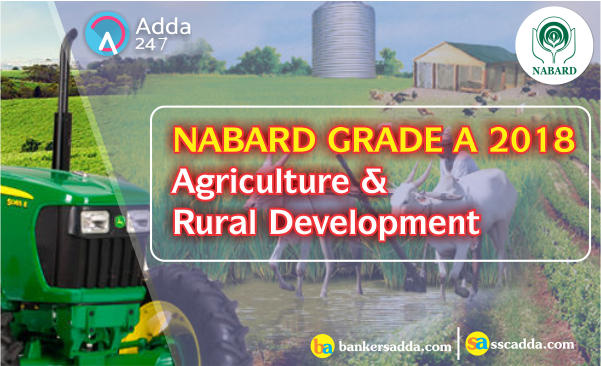
The upcoming important exams are NABARD grade A and grade B, in which there is a section Agriculture & Rural Development (with a focus on Rural India) having high weightage of 40 marks. So, for the same, it becomes really important to have an in-depth knowledge of the various terminologies and practices involved in agriculture. Further its imperative to be aware of the present scenario of Indian Agriculture and the state of Rural Development in India. To help you with this, today, we are providing you with all necessary information related to the mentioned field which will help you to fetch some good marks.
Availability of quality seeds of improved cultivars is considered crucial for realizing productivity and adoption of cultivars in different agro-climatic conditions. The good quality seed should have the following characters:
1) Genetic purity, and uniformity and should conform to the standards of the particular cultivar.
2) Disease-free, viable seeds.
3) Free from admixtures of other crop seeds, weeds and inert matter.
4) Acceptable uniformity with respect to size, shape and color.
Seed Production
Systemized crop production is known as seed production. In seed production adequate care is given from the purchase of seeds up to harvest adopting proper seed and crop management techniques.
The benefits of seed production are
1) Higher income
2) Higher quality seed for next sowing
There are two types (major) of seed production i.e. Varietal and hybrid based on the type of seed used for multiplication
1) Varietal Seed Production: Single Parent multiplication, Isolation distance requirement is comparatively less, Production is by open pollination, Seed can be used continuously for 3/4/5 generations, Production technique is uniform (multiplication), Production care is comparatively less, Yield will be lower and hence Profit is lower
2) Hybrid Seed Production: Needs two to many parents for multiplication, Isolation distance requirement is comparatively less, Production is by managed control pollination(Female), Seed has to be changed every time, Production technique differs with crop, Production care is comparatively more, Yield will be higher and hence Profit is more.
SCOPE AND IMPORTANCE OF SEED PRODUCTION
Seed is the critical determinant of agricultural production on which depends the performance and efficacy of other inputs. Quality seeds appropriate to different agro-climatic conditions and in sufficient quantity at affordable prices are required to raise productivity.
According to the National seeds Policy 2002, the thrust areas have to be-
1) Varietal Development.
2) Seed Production.
3) Seed Replacement Rate Enhancement.
4) Primary responsibility for production of breeder seed to be that of the ICAR/State Agriculture Universities.
5) An effective seed production programme.
6) Popularization of new varieties.
7) Availability of newly developed varieties to farmers with minimum time gap.
8) Provision of incentives to domestic seed industry to enable it to produce seeds of high yielding varieties and hybrid seeds at a faster pace to meet the challenges of domestic requirements.
SEED PROCESSING
Seed lots received from the field are often at high moisture content and contain trash and other inert material, weed seeds, deteriorated and damaged seeds, off-size seeds, etc. Seed processing is necessary in order to dry the seeds to safe moisture level; remove or reduce to the extent possible the various undesirable material, weed seeds, other crop seeds, deteriorated or damaged seeds. Other than this the seed lot heterogeneity in its physical characters like size, colour, shape etc.
The seed lot is heterogeneous due to the following reasons:
1) The soil is heterogeneous and there is a lot of variability in the fertility status of the soil due to the availability of nutrients, physical, chemical and biological properties.
2) Variability is introduced due to the position of seed set on the plant/ fruit, time of pollination and fertilization over a period of time
3) Variability is created by biotic factors like pest and variability infestation.
4) Variability is also due to the management practices like water, land preparation, levelling, staggered sowing, and uneven distribution of fertilizer and irrigation water, uneven plant protection sprays and uneven maturity at harvest.
Steps in the movement of Seed in a Processing Plant
In its common usage in India, seed processing refers to all the steps necessary for preparation of harvested seed for marketing, namely, handling, drying, shelling, preconditioning cleaning, size grading, treating and packaging, etc.
Types of materials removed from harvested produce during Processing
You may also like to Read:






